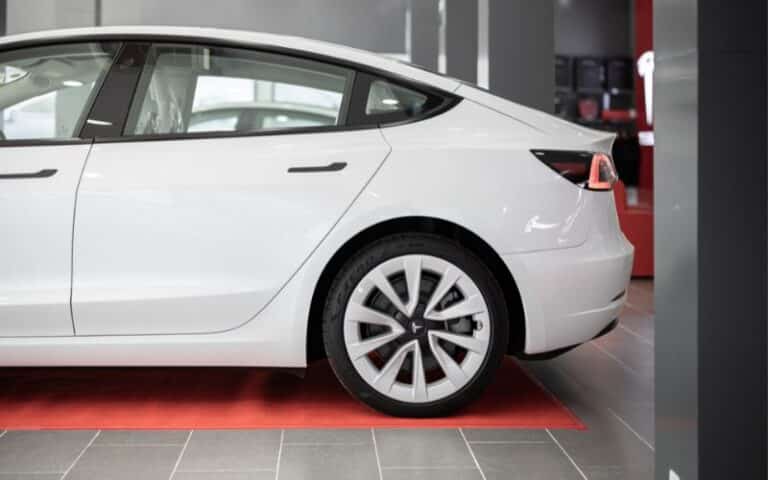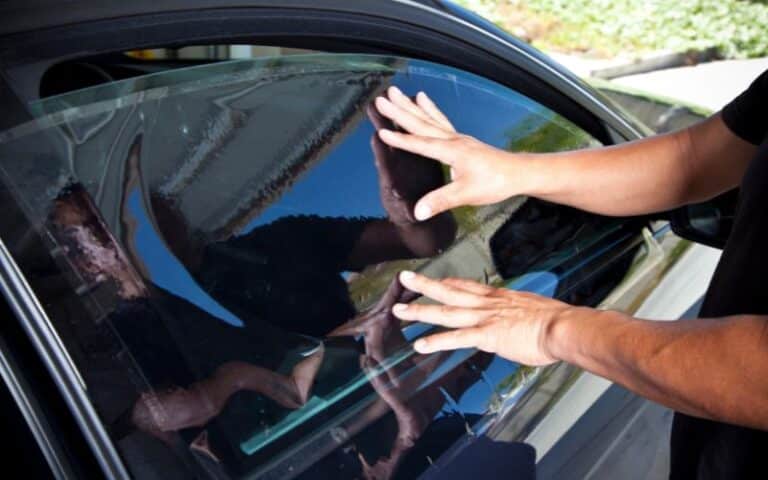Nema 14-50 Outlet Installation Cost!
Electric vehicles like Tesla are an excellent option for those following the zero-emission route.
However, before purchasing, it’s vital to consider every factor about this car, including the charging options.
The regular level 1 charging outlets aren’t as efficient as hoped. And public charging isn’t always convenient, making a level 2 charging option better.
And the best choice is usually the Nema 14-50 outlet. But how much does its installation cost?
The Nema 14-50 outlet installation cost range from $300 to 800. This price is subject to change as it varies depending on the outlet’s location, the type of outlet box, the wiring length, and the electric panel location. But you’ll need to invite a licensed electrician to assess the site and give you a proper estimate.
Come along as we discuss this Nema 14-50 level 2 charging method, its installation cost, DIY installation process, and more.
How Much Does the Nema 14-50 Outlet Installation Cost?

Installing a Nema 14-50 outlet costs around $500 to $2500. However, this isn’t a standard price as the factors influencing its cost vary.
As a result, it’s best to have an electrician assess the location and give you an accurate quote. But Wattlogic’s digital survey can help you with that.
This survey relieves you of the stress and time required for an electrician to come over and calculate everything.
Factors Influencing NEMA 14-50 Outlet Installation Cost
As previously mentioned, several factors affect the Nema 14-50 outlet installation cost, making it more expensive or affordable.
You should also make preparations and research before going ahead with this. Below are the primary things to consider.
#1. Location
Where you choose to install the Nema 14-50, outlet plays a major role in its cost. If you choose farther areas like basements, the electrician will charge more.
But if you choose easily accessible spots like garages, it’ll be less time-consuming and affordable.
#2. Wiring Requirements
Most electric vehicle charging outlets require special wiring, especially for high-powered EVs. You’ll spend more on this process if yours falls under this category.
Additionally, you may have to buy extra wires if the existing ones aren’t enough.
#3. Labor
The labor cost an electrician will charge depends on other factors explained above and their experience level.
Many newbies may charge less as they’re not experts, while the professionals will charge more. But the labor costs vary from $400 and $2000.
Also, some electricians may charge a direct fee, while others prefer an hourly rate.
Whatever the case, ensure they provide an accurate and detailed quote to prevent complications.
#4. Materials
The materials you’ll need to install a Nema 14-50 outlet, such as the circuit breakers, wires, and other items, have prices.
Combining these items adds up to the overall cost, especially as their prices vary due to brand and product quality.
Below is a table highlighting the estimated cost range for some installation materials.
| Materials Used | Price Range |
|---|---|
| Standard Outlet | $50 – $100 |
| Heavy-Duty Outlet | $100 – $200 |
| Copper Wiring | $100 – $200 |
| Aluminum Wiring | $150 – $250 |
| High-Quality Connectors | $50 – $100 |
| Standard Connectors | $20 – $50 |
#5. Permits and Inspections
If the Nema 14-50 outlet you’re installing is your first outlet, you may need an electrical permit. Some regions also mandate this to guarantee you follow all building codes.
Is a Nema 14-50 Outlet Installation Worth It?
Installing a Nema 14-50 outlet in residential or commercial buildings is a great choice. It offers several amazing advantages, which we’ll mention below.
- The Nema 14-50 outlet offers increased convenience, allowing electric vehicles to charge their cars faster and more efficiently. This way, you can charge at home or on the go.
- It enhances energy efficiency since it requires less energy than conventional outlets, saving you money on energy bills over time.
- It increases safety as all Nema 14-50 outlets have specific designs of safety standards that guarantee peace of mind.
- Nema 14-50 outlets increase a building’s resale value as they’re desirable for many home buyers with electric vehicles.
- These outlets are compatible with several devices, electric vehicles, and appliances, making them versatile.
- Finally, installing this outlet helps prepare you for future charging needs as electric vehicle owners increase, making public charging stations more inconvenient.
Should I Replace or Fix a Broken Nema 14-50 Outlet?
Choosing to replace or repair a broken Nema 14-50 outlet entirely depends on the extent of the damage.
If the outlet suffered minor damages or issues like a simple wire connection fault, repair it. But if the problem is complicated, extending to multiple damages, replace it.
Next, it’s vital to consider the outlet’s working condition and age. For example, if a newly installed Nema outlet has an issue, the first thought is to repair it because you just installed it.
But if it’s an older outlet, you may begin considering a replacement since it’s been with you for a while.
So, a replacement is best if your Nema 14-50 outlet often has recurring problems.
More importantly, look for any signs of a faulty outlet. It helps you fix the issue on time to avoid replacing the entire outlet.
Another vital point to consider is safety. If the outlet begins to spark, overheat, or cause electrical shocks, replace it immediately.
That is a safety risk that can endanger you and your electric vehicle.
Furthermore, consider your experience with electrical matters.
When you notice any odd sign with your Nema 14-50 outlet, don’t decide it’s an issue needing repair without asking for professional advice first.
Electrical work isn’t something to compromise on; incorrect work can threaten your safety.
In conclusion, it’s best to seek a professional electrician’s suggestions before deciding whether a replacement or repair is necessary.
Can You Install a Nema Outlet Yourself?
Although hiring an electrician to install your Nema outlet is always advisable, an experienced DIYer can handle it.
But you must follow all steps religiously and ask for professional assistance if things get complicated.
If you wish to install this EV charging outlet, here’s a step-by-step guide.
Step 1
Gather all the materials and tools you’ll need for this job. You’ll first need the Nema outlet, electrical wires, wire connectors, circuit breakers, and other vital tools.
Step 2
Turn off the power to the circuit in the area you’ll be working on. It’s best to do this to avoid electric hazards.
Locate the appropriate circuit breaker in your home’s electrical panel and switch it off to prevent flowing electricity.
Step 3
Choose the Installation location for the NEMA outlet. But before that, here are five things to consider:
- Ensure the charging outlet is safe and far from combustible materials and liquids.
- Choose an area accessible to your car so you don’t have to stretch the wire beyond its limit to plug in.
- Select a covered area that isn’t susceptible to extreme weather conditions.
- Install the Nema outlet near a power source for easy access
- Finally, choose a well-ventilated space to ensure the outlet doesn’t overheat and burn.
Step 4
Inspect the electrical panel to ascertain if it can carry an extra load. Suppose it can’t, you must upgrade the panel or install a subpanel.
These electrical panels should have a specific circuit breaker for the EV charger, and you must rate the wiring for the charger’s amperage.
Step 5
Run the electrical wires and calculate the distance between its panel and the outlet location. Cut the wires accordingly and use wire strippers to remove the insulation from both ends.
Proceed to connect the wires to the Nema outlets using suitable connectors. Ensure the wires match accurately for hot, neutral, and ground.
Step 6
Mount the Nema 14-50 outlet to the surface and secure it with screws. Run all wiring and connect the circuit breakers.
Check if the outlet is well aligned, then turn on the power. Secure any wires on the floor with clips to prevent accidental damage or someone tripping over them.
Test it to know it works, and you’re all done.
DIY Vs. Electrician
Following the steps above will guarantee a successful Nema 14-50 installation, but hiring a professional will always make a difference.
Below, we’ve compared the differences between a DIY and a professional.
#1. Cost
A Nema 14-50 outlet installation costs about $500 to $2,500. While this seems much, doing it yourself may be higher.
You may think you’re saving on labor costs, but purchasing the tools needed for the job can rack up bills.
But buying those tools and having them, plus the experience you’ll get from doing it, will also be valuable in the long term. It’s entirely up to you.
#2. Safety
Watching YouTube videos on how to work with electricity can only do so much. Trying will be dangerous if you don’t know properly about such a thing.
But an expert already knows all this and will carry out the work safely.
#3. Time
Nema outlet installation can be time-consuming and even worse if you’re a newbie. You may make mistakes along the line and need to retrace your steps.
That will be challenging. However, hiring a professional saves you time and ensures an efficient job. If you have time to spare, you may do it yourself.
Whatever method you choose for the Nema 14-50 installation, ensure it works best for you.
And don’t forget to properly maintain the outlet, as it guarantees your EV charger works well for a long time.






